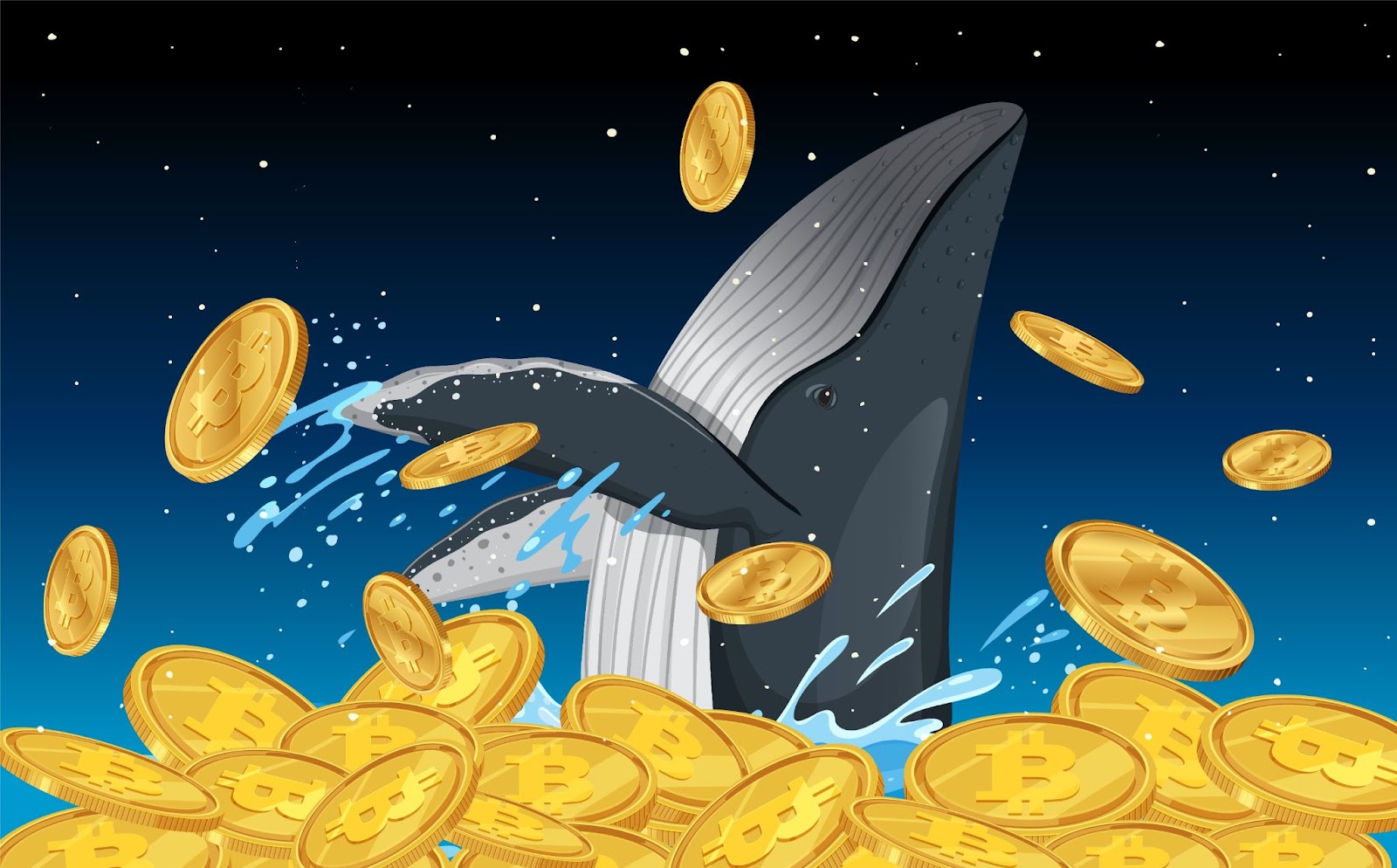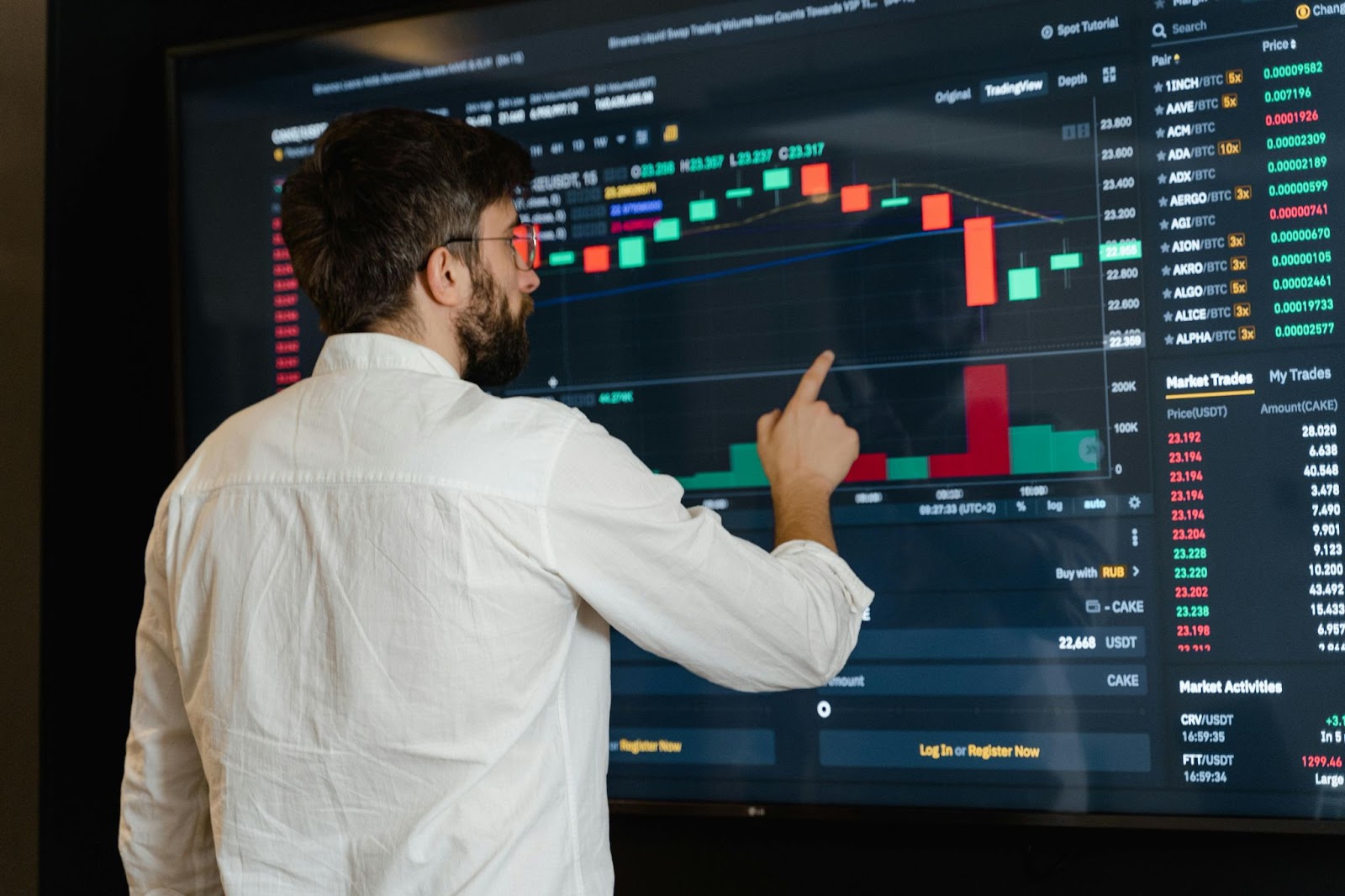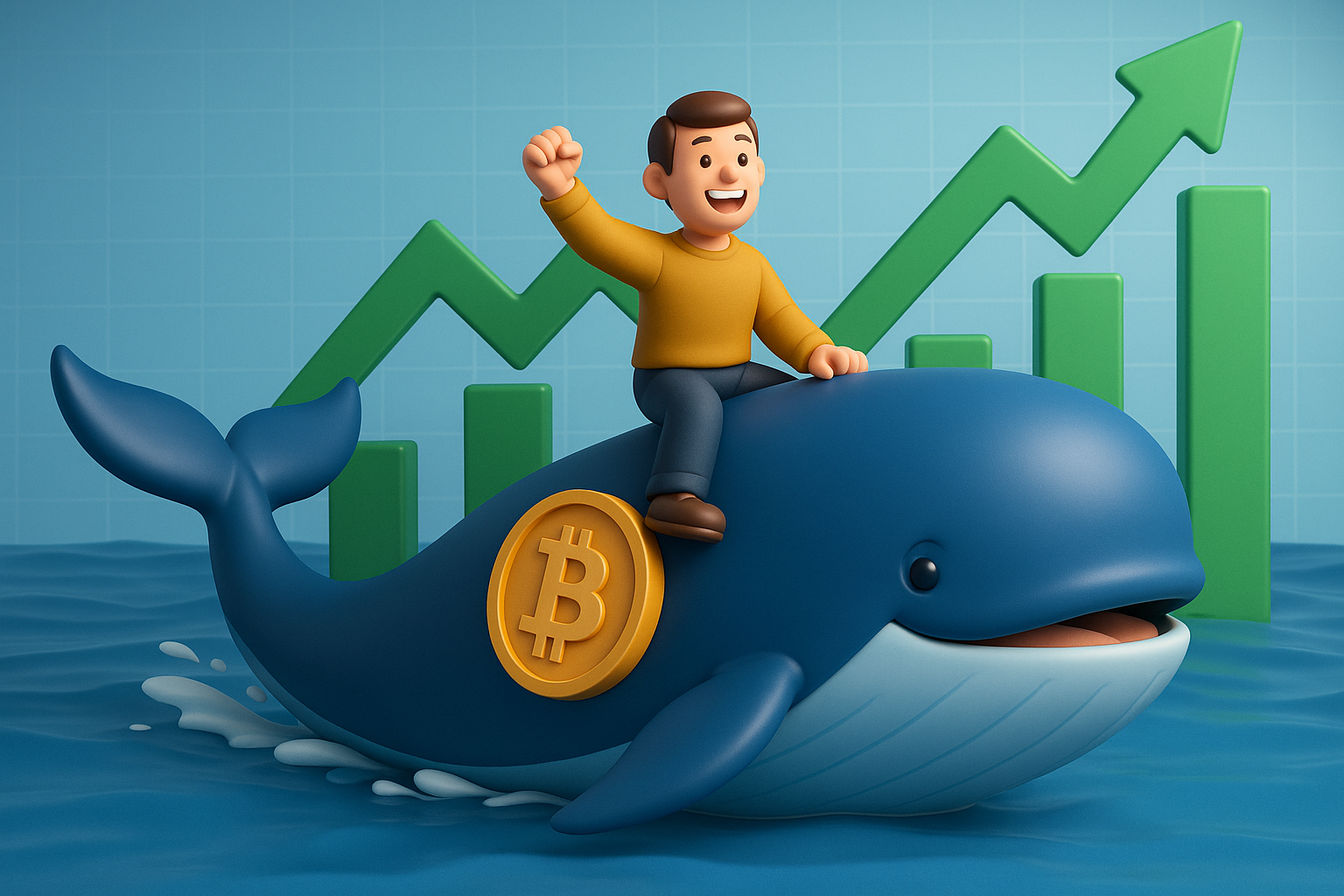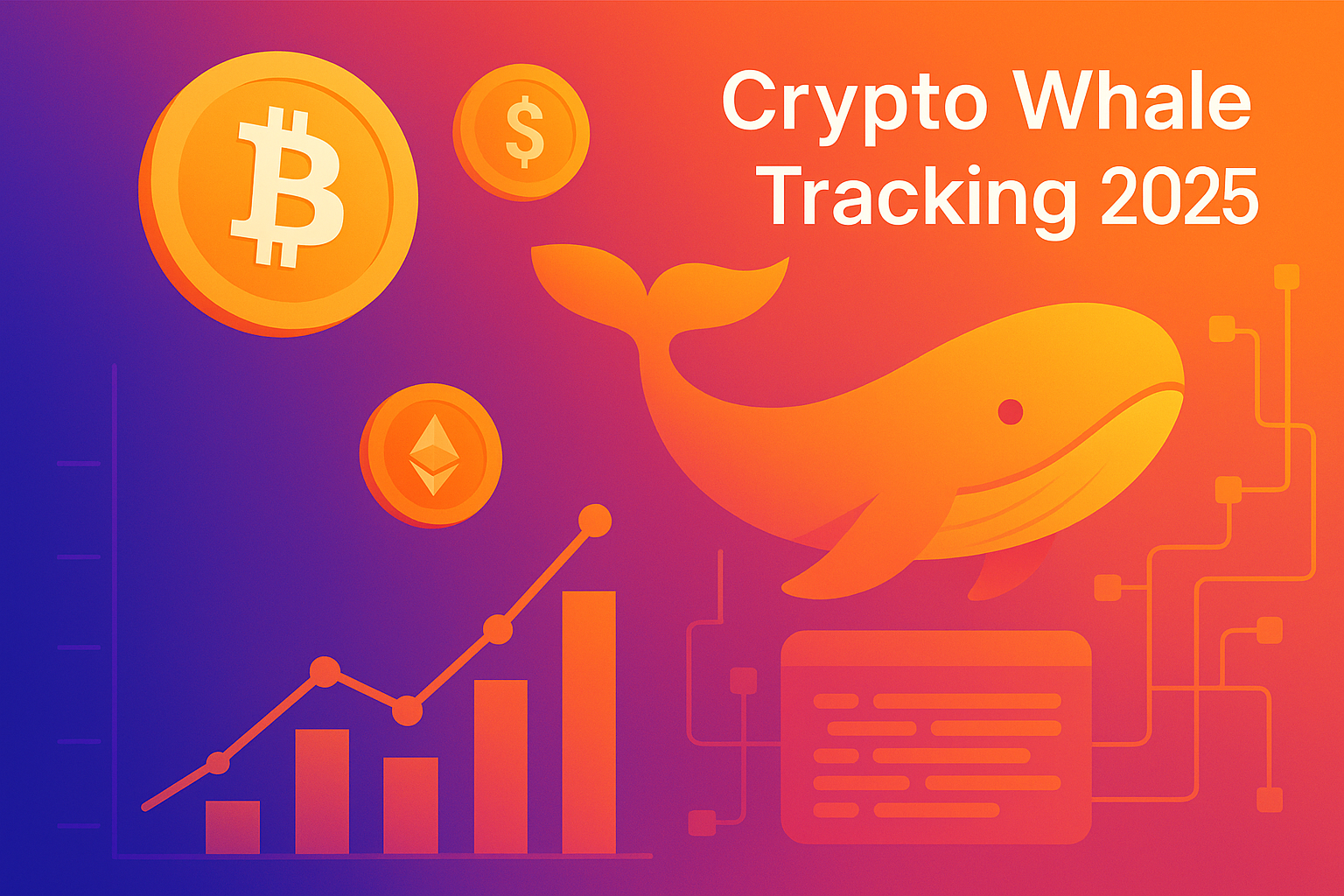Here’s all you need to know about crypto whale tracking 2025.
The crypto ocean is full of surprises. Prices crash, soar, then spin sideways. Often without warning. But if you look beneath the surface, you’ll find something interesting. Massive players, called crypto whales, are making quiet moves that shake the market.
These whales don’t tweet their trades. They just move millions in silence. But their blockchain footprints? Visible. And in 2025, more traders than ever are looking into how to track crypto whales.
That’s where crypto whale tracking 2025 comes in. It’s not about copying the rich. It’s about understanding what smart money is doing. When, where, and why.
Think of it like reading ocean currents. Once you know how they flow, you can ride the waves instead of getting wiped out. So, let’s dive in. We’re going deep into the world of whales, wallets, and wisdom. So you can follow the big fish without getting swallowed whole.
What are crypto whales?

Image on Freepik
A crypto whale is someone (or something) that holds a large amount of a specific cryptocurrency. We’re talking thousands of Bitcoin or hundreds of thousands of ETH. Obviously, these aren’t your average retail investors.
They could be early adopters who struck gold in 2011. Or large institutions. Even crypto exchanges themselves sometimes act like whales. Their moves, buying, selling, transferring, can shake the market.
Because of their size, whales can influence prices just by shifting funds between wallets or in and out of exchanges. One big splash, and everyone feels the wave.
Types of crypto whales
Not all whales are created equal. Here are a few kinds you’ll often come across:
- The OG Holders – Bought early. Still holding strong. Think silent giants.
- Institutional Whales – Hedge funds, ETFs, or crypto companies with major stacks.
- Exchange Wallets – Often misread as whales, but they just hold user funds.
- Smart Contract Whales – Large holdings locked in DeFi protocols or DAOs.
Each one behaves differently. That’s why crypto whale tracking 2025 isn’t just about watching big wallets. It’s about knowing who they are and why they move.
Why they matter so much
Let’s say a whale suddenly sends 5,000 BTC to an exchange. Traders panic. Prices dip. Now imagine another whale starts withdrawing ETH like crazy. Suddenly, everyone’s bullish again.
Whales shape sentiment. They trigger trends. Sometimes, they front-run retail traders. Other times, they quietly accumulate while the rest of us chase noise. That’s why it’s crucial to understand who’s swimming beneath the surface. Because once you spot their patterns, you stop reacting emotionally. And start thinking strategically.
Whales may move silently, but they don’t go unnoticed. Not anymore. And that’s why learning the art of crypto whale tracking in 2025 could give you the edge most traders still dream about.
Why crypto whale tracking 2025 is essential

Image on Freepik
2025 isn’t the same crypto landscape we saw just a few years ago. It’s faster, smarter, and far more crowded. New tokens pop up daily. Memecoins become million-dollar stories overnight. And AI is now writing half the tweets you read on Crypto Twitter.
But amid all the noise, one truth remains: the whales are still calling the shots.
That’s exactly why crypto whale tracking 2025 isn’t just a fun side hobby. It’s a vital skill for anyone who wants to survive, and thrive, in today’s market.
Whales move the market, literally
Large investor movements can shift the price of a coin. Sometimes by a lot. When a whale dumps tokens into an exchange, prices drop. When they pull coins out? People assume accumulation is happening. And prices often rise.
Their behavior sends signals. And smart traders are watching.
So in 2025, when a multi-million-dollar BTC transfer happens, it’s not just a number on a blockchain. It’s a potential warning sign… or opportunity.
More whales, more influence
Here’s another twist: there are more whales than ever now. Back in the early days, whales were mostly anonymous crypto nerds who struck it big. But now?
- Hedge funds.
- Public companies.
- Venture capitalists.
- Even governments.
All are dipping into crypto. Some with billions at play. That means more big moves, more strategic positioning, and much higher stakes. As traditional finance merges deeper into crypto, the behavior of these big players matters even more. And that makes tracking their moves absolutely essential.
Whales aren’t just in Bitcoin anymore
Gone are the days when whale watching was limited to Bitcoin and Ethereum. In 2025, whales are active in:
- DeFi protocols
- Layer-2 networks
- AI tokens
- NFT marketplaces
- DAO treasuries
They’re not just moving coins. They’re influencing ecosystems. So if you’re only watching BTC, you’re missing half the ocean. This broader activity makes crypto whale tracking 2025 more complex… but also more powerful, if you know where to look.
Smart money leaves smart clues
Another reason to care? Because whales often have better information than the rest of us. They’re connected. They have research teams. And they’re usually early. Way before retail investors even hear the rumors.
By tracking whale behavior, you can spot trends before they hit mainstream news. It’s like getting a sneak peek behind the curtain. You might not always follow them, but you’ll know what the smart money is thinking.
In short, whale tracking in 2025 isn’t about copying. It’s about understanding. It’s about reading the room before making your move. And in a fast-moving, unpredictable crypto world, that extra edge can make all the difference.
How to track crypto whales: Tools & techniques
AI Generated Image
So, you’re ready to follow the whales. Great! But this isn’t about throwing on scuba gear and diving into a blockchain abyss. It’s about using the right tools, reading smart signals, and making sense of what’s really going on beneath the surface.
In 2025, crypto whale tracking is part science, part instinct. And completely accessible if you know where to look. Let’s break it down.
Top platforms & tools (2025 edition)
If you’re going whale watching, you’ll need a good pair of binoculars. In crypto terms, that means using powerful platforms that make complex blockchain data easier to understand.
Whale Alert
This is your classic starting point. Whale Alert tracks massive transactions across multiple blockchains in real time. Whether it’s a 10,000 ETH transfer or a sudden Bitcoin move to Binance, this tool sends alerts instantly. Often via Twitter or Telegram. Simple, clean, and reliable.
Arkham Intelligence
Think of Arkham Intelligence as the “CIA for crypto wallets.” It uses AI and public labeling to identify who owns what. You can explore dashboards of well-known funds, influencers, and institutions. Want to know if a16z just made a play on a new token? Arkham might have that data.
Etherscan Whale Wallets
Etherscan remains a go-to for Ethereum on-chain transparency. And yes, they’ve got a list of top ETH holders. While it’s more manual, it’s excellent for checking balances, token histories, and contract interactions. Straight from the source.
Dune Analytics Dashboards
Custom dashboards galore. Dune lets the community build and share visualizations on just about anything. Want to see which whale bought the dip last night? Someone probably built a dashboard for it. And the best part? It’s free.
Glassnode’s On-Chain Metrics
This one’s for the data nerds. Glassnode provides macro-level insights on whale behavior. Like exchange inflows, dormant wallet activity, and whale accumulation zones. It’s ideal if you want to understand bigger patterns instead of just individual wallet moves.
Token Unlock Trackers (Like TokenUnlocks)
Some whales love to dump right after vesting schedules unlock. Tools like Token Unlocks track when large token allocations (especially from VC rounds or project teams) become available. In 2025, many traders watch these calendars religiously.
Wallet watching tactics
Alright, tools are great. But now let’s talk about strategy. How do you actually use them?
Identifying known whale wallets
Step one? Find the whales. Some wallets are publicly known. Belonging to exchanges, funds, or big-name crypto OGs. Platforms like Arkham, Nansen, and even Reddit communities often maintain up-to-date lists. Follow those.
Using labeling tools
Not every wallet has a name tag. But with labeling tools, you can trace behavior patterns and connect wallets through transactions. For example, if Wallet A keeps interacting with Wallet B, and Wallet B was labeled as “Coinbase Cold Wallet,” you can start piecing things together.
Tracking exchange activity
This is huge. If a whale moves funds to an exchange, it often means they’re preparing to sell. If they withdraw from an exchange, it could signal accumulation. Watching wallet-to-exchange and exchange-to-wallet flows gives you powerful early warnings.
Bonus tip? Set alerts. Many platforms let you receive notifications the moment a specific wallet makes a move. That way, you don’t have to refresh dashboards all day.
Social & community signals
Blockchain data is only half the story. The other half lives in Telegram chats, Discord servers, and Twitter threads.
Telegram whale bots
In 2025, some of the best whale trackers live inside Telegram. Bots like Whale Alert, WhaleBot, and Smart Money Tracker can notify you of big moves across multiple chains, right in your chat feed. Instant, easy, and often customizable.
Twitter/X threads
Crypto Twitter is still alive and kicking. And full of insights. Many traders and analysts break down whale transactions in plain language. They’ll highlight unusual behavior, predict reactions, and even post on-chain screenshots with commentary.
Follow accounts that specialize in on-chain analysis. And always double-check before acting on their take.
Discord alpha groups
If you’re in a good Discord, you know the value of “alpha.” These tight-knit communities often discuss whale behavior before it trends. People share wallet labels, swap insights, and even help track DeFi whales moving across chains.
Just remember. Don’t believe everything you hear. Use these communities to support your own research, not replace it.
Putting it all together
By now, you’ve got tools, tactics, and signals. So how does this fit into crypto whale tracking 2025?
Simple. Think like a detective.
Use platforms to gather data. Track wallets to spot intent. Then watch social channels for context. When all three line up, you’ll start seeing patterns that others miss. And once you’ve seen a few of those, reacting becomes less emotional. And a lot more strategic.
The whales may be quiet, but their footprints are all over the blockchain. And now, you know exactly where to look. However, when you have blockchain transaction analytics data in your hand, how do you actually read it? What do you look for and how do you draw deductions?
Reading blockchain transaction analytics like a pro

Photo by Tima Miroshnichenko
Tracking whales isn’t just about spotting wallet addresses and chasing alerts. It’s about reading between the lines. Turning raw blockchain activity into insight. The good news? You don’t need a degree in data science. Just a curious mind, a few key metrics, and the ability to spot a pattern before the crowd does.
For crypto whale tracking 2025, understanding on-chain behavior is what separates smart observers from emotional traders. Let’s explore how to decode the blockchain transaction analytics like a pro.
Understanding key metrics
Here are the major metrics to know about:
Inflows and outflows to exchanges
Here’s one of the biggest clues a whale can leave behind.
- Inflows = Coins moving into exchanges. This indicates that a whale might be preparing to sell.
- Outflows = Coins moving out of exchanges to private wallets. This means that a whale is likely accumulating.
This matters because most big sell-offs start with heavy inflows. If you see millions of dollars worth of ETH suddenly land in a centralized exchange, you better believe it’s time to pay attention. Many platforms like Glassnode and Nansen track these movements in real time. Often with clear charts that show spikes in activity.
Dormant wallet activity
Some wallets sleep for years. Then one day they spring to life.
When an old whale wallet suddenly becomes active, it raises questions. Are they preparing to sell? Moving funds for staking? Or maybe just reorganizing? The longer the wallet has been dormant, the more dramatic the reaction when it wakes up.
Dormant wallets are tracked on tools like Whale Alert or Glassnode. Look for sudden activity after long periods of silence. Those moments often precede major market shifts.
Token swaps and bridge movements
Whales love to rotate portfolios. Sometimes they swap ETH for stablecoins. Other times they bridge tokens from Ethereum to Solana, or Arbitrum to Base. Why? To gain exposure in new ecosystems or prepare for an airdrop or launch.
Watch these cross-chain moves closely. They often hint at the next trending chain or project. If a cluster of whale wallets suddenly starts bridging to a specific layer-2, something big might be brewing.
Cluster analysis and wallet connections
This one’s for the sleuths. Cluster analysis groups wallets based on shared behavior, history, or interactions.
For example, if Wallet A frequently sends funds to Wallet B, and both wallets interact with the same DeFi contract. Chances are, they’re connected. Tools like Arkham or Breadcrumbs make this easier by visualizing wallet networks.
Cluster analysis helps you spot larger movements happening in disguise. Because many whales break up funds across dozens of wallets.
Behavior patterns to watch
Data alone isn’t enough. You need to know what behavior looks like when whales are getting serious.
Front-running
Some whales buy in before major token announcements or exchange listings. This is called front-running. And it’s surprisingly common.
If a whale buys a new token just before it gets listed on Binance or Coinbase, the price usually explodes right after. Spotting these early buys can give you a major edge. Look for sudden large investor movements in low-volume tokens. Especially when followed by social media buzz or dev activity.
Accumulation vs. Distribution
Here’s the difference:
- Accumulation: A whale slowly buying over time.
- Distribution: A whale slowly selling off their stash.
Accumulation often happens during quiet markets. When prices are low, and fear is high. Distribution tends to follow hype, when whales sell into retail excitement. Check wallet behavior over weeks.
Not just one day. Repeated small buys can signal smart accumulation. A series of small transfers to exchanges? Likely a slow dump.
Sudden wallet consolidation
Sometimes whales consolidate funds from multiple wallets into one. Why does this matter?
Because it usually means something is about to happen. Either a big trade, a move to a cold wallet, or entry into a new position.
Wallet consolidation is like whales clearing their desks before making a decision. It doesn’t guarantee action. But it often precedes big moves.
New token purchases before listings
Want alpha? Track whales who regularly buy new tokens before they hit the big platforms. If you see multiple large wallets buying into an unknown token, and there’s chatter about an upcoming listing, that’s a major signal.
Use Etherscan, Arkham, or Nansen to spot early entries. Combine this with social signals, and you’ve got yourself a powerful edge.
Visual analytics tools
You don’t have to read endless rows of wallet IDs and raw data. Visual tools make whale tracking much easier. And way more fun.
Charts
Glassnode, Dune, and Nansen offer clean charts that show whale metrics over time. Look for patterns like repeated outflows, rising balances, or transaction spikes.
Heatmaps
Heatmaps highlight areas of intense activity. If a certain token or chain lights up with large investor movements, you know where the action is.
Flow diagrams
These show how funds move from one wallet to another. Great for tracing large investor movements across chains. Arkham and Breadcrumbs are ideal for this. By visualizing activity, you spot trends faster. And make smarter decisions without drowning in data.
Bringing it all together
In 2025, crypto whale tracking isn’t about blindly following the rich. It’s about interpreting on-chain behavior with nuance and clarity. The blockchain tells a story. Every inflow, swap, or bridge movement is a sentence. Your job? Read between the lines.
So dive into the data. Trust your eyes, sharpen your instincts, and remember. When you understand the analytics, you stop reacting… and start predicting.
What not to do when reacting to a whale move
AI generated image
So, you spot a giant wallet moving $10 million worth of ETH to Binance. Your heart races. Your palms sweat. You’re ready to hit the “sell” button before the market crashes.
Stop. Breathe. Think.
When tracking crypto whales, it’s easy to get caught up in the drama. But reacting blindly to every big move is a fast track to poor decisions. And painful losses. Here’s what not to do when whales make waves.
Don’t panic, you’re not plankton
First things first: not every whale move is market-moving.
Maybe they’re just rebalancing a portfolio. Maybe they’re bridging to another chain. Or maybe they’re just reorganizing wallets. Jumping to conclusions leads to rash moves. Usually at the worst time.
Instead of panicking, ask questions. What’s the context? What’s the token’s current trend? Are multiple whales moving, or just one? Whale activity is just one piece of the puzzle.
Avoid the fake-outs
Yes, not all whales play fair. Some use decoy wallets or fake transfers to stir up panic or excitement. It’s a psychological game. Especially in low-liquidity markets where one odd move can trigger a frenzy.
Don’t fall for the bait. Always double-check wallet labels, track past behavior, and compare multiple sources. If something feels off, it probably is.
Don’t follow the herd
Just because Crypto Twitter is freaking out doesn’t mean you should too.
In 2025, trading is faster than ever. And so is the spread of misinformation. One whale move goes viral, and suddenly thousands of retail traders pile in without understanding what’s really happening.
But following the crowd usually means you’re already late. Use crypto whale tracking 2025 as a signal, not a command. Make sure it aligns with your strategy before jumping in.
Don’t ignore the bigger picture
Let’s say a whale dumps a large amount of tokens. Should you sell too?
Maybe. But maybe not.
Ask: Is this part of a longer pattern? What’s happening in the broader market? Is this whale historically bearish? Or just cashing out a small chunk? Zoom out. Look for trends, not one-off surprises. Smart traders follow patterns, not single events.
Don’t gamble without a plan
If your only reaction to whale activity is “Buy! Sell! Repeat!”. You’re not trading, you’re gambling. Always pair whale signals with other tools: technical analysis, project fundamentals, and macro news. Reacting without a plan is how traders lose money fast.
Set alerts. Set goals. Stay calm.
At the end of the day, whales might move the market. But you don’t have to move with them every time. Let crypto whale tracking 2025 guide your thinking, not control your actions.
Because in crypto, patience often beats panic.
Tips for smart crypto whale tracking in 2025

AI generated image
By now, you know crypto whales are powerful. Their movements can tilt markets, create hype, or spark panic. But here’s the truth: watching whales isn’t just about spotting big moves. It’s about tracking them smartly.
In this final stretch, let’s walk through some practical tips that will help you master crypto whale tracking 2025 like a pro. No guesswork. Just good habits and sharper instincts.
Tip #1: Don’t just watch, understand
Anyone can see a big transaction on a blockchain explorer. But smart tracking starts with asking why. Is the whale sending funds to an exchange? Pulling tokens into cold storage? Bridging to another chain? Every move has a motive. Try to understand the context before reacting.
Also, pay attention to past behavior. Some wallets always sell after moving to exchanges. Others just reshuffle for staking. Learn their patterns.
Tip #2: Use multiple tools together
No single tracker sees the whole picture.
Whale Alert might catch big transfers. Arkham could show you who owns the wallet. Dune dashboards might show the macro trend. And TokenUnlocks may reveal why that wallet just got a ton of tokens.
When you combine tools, you get better clarity. It’s like watching the same story from different camera angles. And in 2025, the tools are better, and more connected, than ever before.
Tip #3: Set up alerts (and actually check them)
Don’t spend your life glued to dashboards. Set alerts that notify you when something worth watching happens. Most tracking platforms let you create custom alerts for:
- Exchange inflows/outflows
- Wallet activity
- Token swaps
- Large buys/sells of specific coins
Telegram bots, browser push alerts, and even email notifications work wonders. That way, you stay informed without getting overwhelmed.
Tip #4: Join communities that share alpha
Crypto moves fast. But communities move faster.
Find a Discord group, Telegram channel, or Reddit thread where smart people break down whale behavior in real time. You’ll pick up insights, see how others interpret on-chain activity, and learn from seasoned traders.
But here’s the key. Don’t just copy trades. Use the community to refine your own thinking.
Tip #5: Backtest what you see
If you think a certain whale’s move is a bullish signal, test that theory.
Look back. What happened the last three times they made a similar transaction? Did prices go up or down? Was there news around that time? The best whale trackers are data detectives. They don’t just react. They verify.
Use historical data on platforms like Glassnode or Dune to validate your assumptions. It’ll sharpen your instincts over time.
Tip #6: Combine on-chain with off-chain clues
Sometimes, the real story starts off-chain.
Maybe a whale just bought a new token. Cool. But why? Is the project about to announce a partnership? Did a VC firm just join the advisory board? Or is there an upcoming token unlock?
In 2025, the smartest tracking happens at the intersection of on-chain data and off-chain narratives. Follow both to get the full story.
Tip #7: Stay calm, stay curious
Finally, and maybe most importantly: don’t chase every splash.
Whale tracking is powerful, but it’s not a crystal ball. Use it to guide your strategy, not replace it. Stay patient. Watch consistently. Learn from every move. And above all, stay curious. Because the deeper you look, the more the blockchain reveals.
With these tips, crypto whale tracking 2025 becomes less of a guessing game and more of a skill set. One that gives you a serious edge in the market. Without the stress, noise, or knee-jerk reactions.
Now you’re not just watching whales. You’re swimming with them.
Conclusion
Crypto whales aren’t hiding. They’re just quiet giants moving through digital waters. But in 2025, their moves are louder than ever. If you know how to listen.
With the right tools, clear thinking, and a bit of curiosity, crypto whale tracking 2025 becomes more than just a trend. It becomes a strategy. One that helps you spot smart money, avoid traps, and trade with confidence.
But remember. Don’t just react. Observe. Think. Learn. Because while whales may shape the waves, it’s up to you to ride them wisely. So stay sharp. Stay steady. And let the blockchain show you the way.
And if you wish to know when and how these whales are moving? Then join the Investors Collective community, where we provide expert-backed, real-time insights and signals.
Frequently Asked Questions
1. Can crypto whales manipulate the market?
Yes, whales can influence short-term price action due to the size of their trades, especially in low-liquidity markets. However, long-term trends still depend on broader market factors.
2. Is whale tracking only useful for day traders?
Not at all. Long-term investors also use whale data to understand accumulation trends, potential sell-offs, and smart money interest in emerging projects.
3. How can I tell if a wallet belongs to a real whale or just an exchange?
Platforms like Arkham and Nansen use labeling and transaction history to help distinguish between actual whale wallets and those holding user funds for exchanges.
4. Are there risks in relying too much on whale tracking?
Yes. Whale moves can be misleading without context. Always combine whale tracking with other research like fundamentals, news, and market sentiment.
5. Do whales ever use private or hidden wallets?
They often spread funds across multiple wallets or use privacy tools, but their activity is still traceable on-chain. Just harder to interpret without experience.

